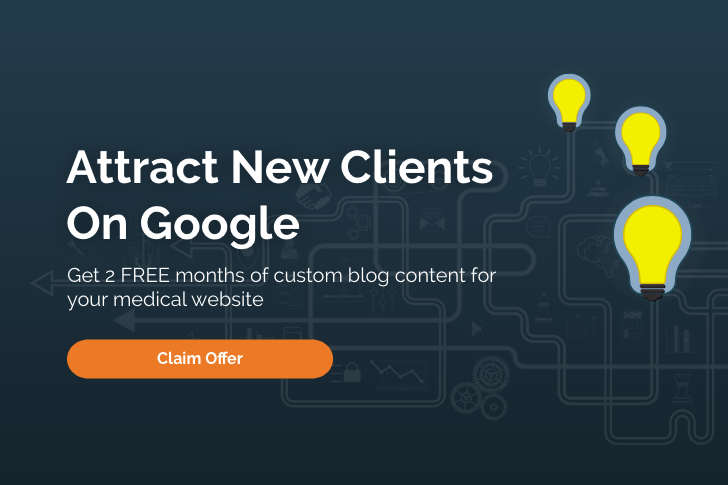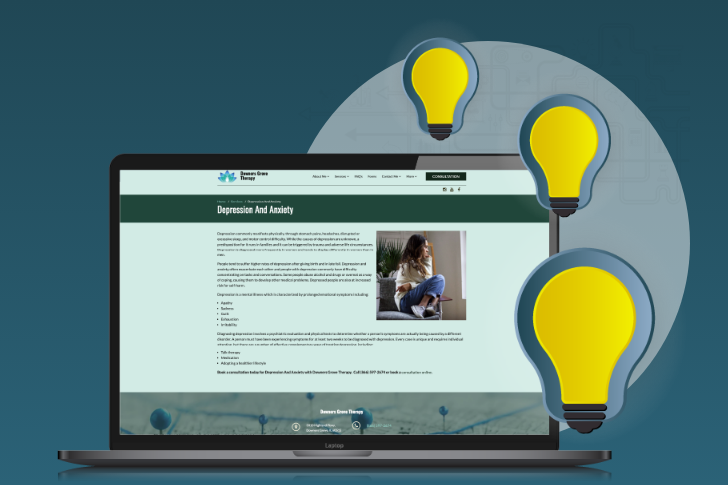Every minute of every day, there are 70,000+ health-related searches on Google. Surprisingly, only 28% of healthcare marketers claim they have a clearly documented content marketing strategy in place. Given the invaluable role of blogging, it’s concerning that the healthcare sector, especially therapy practices, often lags behind due to limited time or resources for crafting effective content strategies. Recognizing this challenge, we’ve curated a dynamic list of 7 blog post ideas designed to not only elevate your online presence but also genuinely connect with and assist your potential clients.
1. Show What Success Looks Like With Patient Testimonials
Never underestimate the power of heartwarming success stories like “Alex’s Journey to Emotional Healing: A Testimonial.” With permission from satisfied clients, sharing their real-life experiences not only brings a human touch to your practice but also gives hope to those considering therapy, illustrating the transformative power of your work. Many people are skeptical of therapy, and this is an opportunity to show that it works.
The Mental Gym | Testimonials
2. Create Engaging List Posts
Who doesn’t love a good list? “8 Ways to Combat Anxiety Naturally” or “5 Steps to Finding Your Inner Peace” can be both informative and captivating. These posts are fantastic for readers at various stages of their mental health journey, providing clear, actionable insights in a friendly, approachable manner. They also provide opportunities for your content to be shared with a broader audience and potentially attract more clients.
Blair Wellness Group | 7 Myths and Misconceptions About Anxiety
3. Harness the Power of “How To…” Guides
Delve into practical advice with posts like “How to Establish Healthy Boundaries” or “How to Recognize When You Need Help.” This format is perfect for offering direct, empathetic guidance to those navigating personal or mental health challenges, emphasizing your role as a supportive ally. Again, this type of content is highly shareable and has the potential to widen your reach.
Dr. Chloe Carmichael | How to Survive the Holiday Season With Your Family
4. Incorporate What’s Happening in the News
Stay relevant by weaving in your expert analysis on the latest mental health news or research findings. A post such as “Decoding the Latest Study on Mindfulness” helps demystify complex information, making it accessible and engaging for your audience while showcasing your expertise. Prospective clients can get a sense of how you approach topics that are being buzzed about and debated, making it more likely to find those who align with your point of view.
Grieving Cheslie Kryst. Resources + What to do when someone you love is suicidal
5. Turn Your Client FAQs Into Blog Posts
This is one of the easiest ways to get good blog content created quickly. You likely have this information written already, it just needs to be given a home on your blog. Transform those frequently asked questions into a treasure trove of informative posts. Cover everything from the practical, logistical questions to the ones that are more emotionally driven. In fact, the emotionally-driven topics can become blog posts in themselves. For example, “What to Expect in Your First Therapy Session” can demystify the therapy experience for newcomers, providing comfort and clarity while reinforcing your practice’s openness and approachability. Check out the link below for an example of an FAQ blog article.
AIE Counseling | Frequently Asked Questions

6. Create a Post With the Services and Treatments You Provide
Detailed pages that explain the services you offer, like “Understanding Cognitive Behavioral Therapy: A Comprehensive Guide,” not only inform but also reassure potential clients about the journey they’re considering with your practice. This establishes confidence in your clientele and can help those seeking specific treatments an easy way to find you.
GSwanson ADHD & Life Coach LLC | ADHD Coaching
7. Establish Pillar Pages
Craft in-depth explorations of core therapy concepts, such as “What Is Emotional Resilience?” These pillar pages serve as the cornerstone of your content strategy, offering exhaustive insights on crucial topics and reinforcing your site as a comprehensive resource for both current and prospective clients. Don’t be afraid to include all of the information you have on these topics. A pillar page is typically 2000 – 5000 words in length! Utilize headers and bullets to organize the content and make it easier to scan. Check out the link below for an example of a pillar page.
Mandala Counseling | Depression
In today’s digital era, establishing a lively and empathetic online presence is more critical than ever for therapy practices. Through engaging, informative, and compassionate content, you can bridge the gap between your expertise and the needs of those seeking support.
Our team at TherapySites is committed to helping you navigate this journey, offering tailored solutions to enhance your digital footprint. Connect with us for a free consultation, and let’s explore how we can bring your practice to the forefront of the online healthcare community.
Tags:
BloggingRelated Posts
- How Therapists Can Revamp Their Online Reviews and Listings ( August 15, 2019 )
- 13 Blogging Tips You Need to Know ( April 4, 2019 )
Recent Posts
- 7 Blog Post Ideas for Therapists & Mental Health Professionals
- 10 Step SEO Checklist for Therapy Practices
- 5 Proven Ways A Tailored Therapist Website Can Grow Your Practice
- Navigating The Client Journey: How Online Listings & Reviews Influence Decisions
- Unlock Your Practice’s Full Potential With Digital Marketing
- Your Guide To Getting To Page 1 Of Google
- How to Utilize Social Media to Grow Your Therapy Practice
- Secure More Clients With These 8 SEO Tips
- 5 Proven Ways A Custom Therapist Website Attracts More Clients
- 4 Solutions to Help your Practice Online




